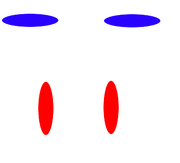- 8,438
- 3,292
- Thread starter
- #81
I have already sent them 2 messages. Maybe you can send one this time around? I don't want to make it seem like I am the only one trying to get this rolling.
Follow along with the video below to see how to install our site as a web app on your home screen.
Note: This feature may not be available in some browsers.
The explosion is assumed to be triggered half way between the solar systems instead of in our system (or at least that was the assumption used to this point). Hence the distance you use would have to be half the distane between alpha centauri and the sun and the sun would be used for GBE, since it is the star with the higher GBE.Assaltwaffle said:A user has just brought up a good question.
"Why did you use the target for 4-A as the Sun and not Alpha Centauri, given you used the distance for Alpha Centauri?"
Despite the Sun being a standard fictional star the requirement of "being able to destroy the nearest star, Alpha Centauri A, and everything in between it" is met far more accurately by using the calculation with the values given from Alpha Centauri A.
Basically: Use Alpha Centauri A as the target in 4-A, rather than the Sun.
I just remembered that the half way assumption should also apply to multi-galaxy level.Assaltwaffle said:Fair enough. I'll recalculate it later tonight.
Wether you need to add the diameter depends on the rotation of the galaxy "disks" to each other, though.Assaltwaffle said:For multi-galaxy shouldn't we also add the diameter of Andromeda and Milky Way to the length between them before cutting it in half? That way we assume that someone midway between the galaxies could fully destroy them.

I don't know, given that it looks like this it seems to be somewhat inclined, albeit mostly in line.Assaltwaffle said:Ahh. Interesting. So are Andromeda and Milky Way horizontally or vertically oriented in comparison to each other?